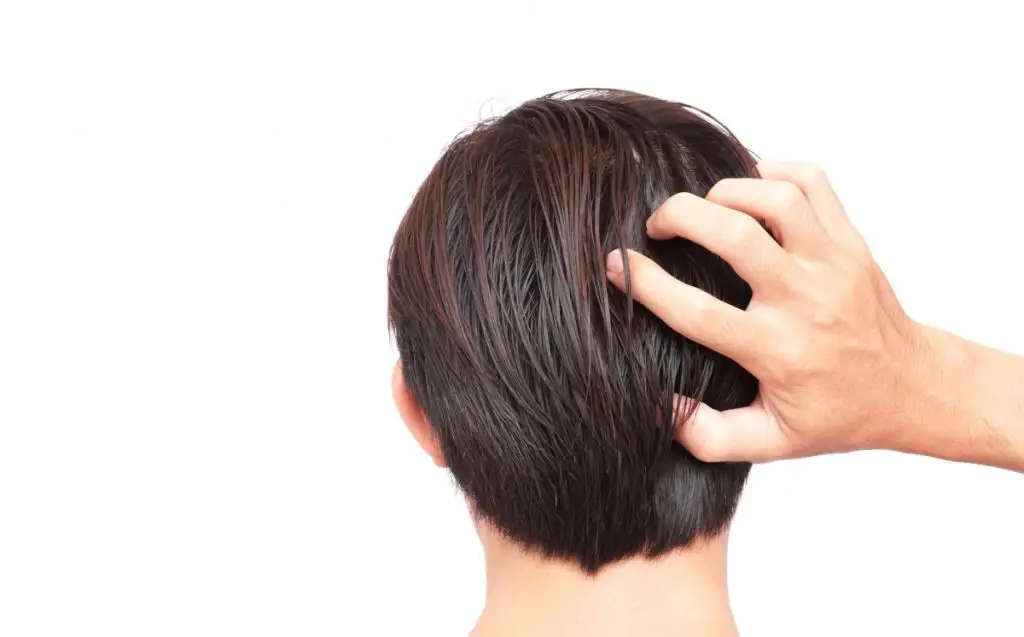
You may have noticed that your hair seems to be growing at different rates. Why does your fringe need to be trimmed all the time, while the hair is shorter in the back?
Your hair is shorter in the back due to the nature of hair growth. Hair grows at the same rate, but not in the same area and at the same time. The answer involves your cyclic hair growth patterns, hair density, genetics, hormones, and nutrition.
If you ever wondered what is going on under your scalp to make your hair behave the unruly way that it does, read on, and find answers to your questions.
Table of Contents
How Does Hair Grow on Our Scalp?
At birth, you will already be blessed or cursed with all the hair follicles you will have for the rest of your life. These follicles number around 5 million, 100,000 of which are on your head.
If you were born with oval hair follicles, you were destined to be curly, and if your follicles are round, your hair will be naturally straight.
Your hair begins its journey to tresses by:
- Forming from a root in the bottom of your hair follicle that is made up of protein cells
- Blood vessels in your scalp provide the nutrients to feed the root, making the cells replicate and make the hair begin to grow
- The hair pushed up out of the skin via an oil gland that provides oil to the hair to keep it soft and supple
- By the time the hair emerges on your head, it is no longer living
On average, your hair grows at a rate of between 0.5 and 1.7 centimeters in a month (0.2 to 0.7 inches.)
This growth rate is uniform throughout your scalp, so why does your hair grow shorter in the back? The first clue is in the cyclic hair growth of your hair.
Your Hair Growth Cycles
Although the hair on your head grows at a constant rate of about 6 inches per year, roughly 15cms, the hair growth regions differ due to one’s hair growth cycles.
These cycles are divided into three stages:

The Anagen Stage or Growth Stage
The anagen stage of hair growth is the active growing stage from the papilla, and this stage can last 3 to 5 years according to your particular genetics. About 85% to 95% of your hairs are in this stage.
The Catagen Stage or Transition Stage
The catagen stage lasts about two weeks, where the hair prepares to renew itself by allowing the papilla to detach and rest.
The hair becomes cut off from the blood supply when signals are sent for the body when the catagen stage begins.
These catagen starting signals only affect roughly 1% of your hair, causing the follicle to shrink dramatically and push the hair shaft upwards.
The Telogen Phase or Shedding Phase
In the telogen stage, the follicle stays dormant for about 1 to 4 months. It affects 10% to 15% of the hair on your head at any given time. When the follicle begins to grow again, the attached hair becomes loosened and sheds.
Not all your hair follicles are active, and scalp follicles may grow and become inactive for a long time.
The cycle growth variations ensure that you don’t go periodically bald and maintain a relatively constant hair density.
This staggering of cycles explains why consistent hair growth may still be different in your scalp regions.
Genetics Can Affect the Anagen or Growing Stage of Your Hair
Genetics strongly influences the length and intensity of your anagen or growing stage of your hair cycle.
Your genetic structure predetermines your hair color and thickness. Along with these attributes, genetics controls your anagenic cycle’s length and determines how long your hair will remain in its growing state.
Your Scalp Has Varying Densities of Hair Follicles
The average density of human head hair that does not have an underlying condition like alopecia is 200-300 hair fibers per cm2.
This density is based on a variety of factors such as age, hair color, and location on the scalp.
The head or crown’s top is where hair follicles are most densely packed at around 250 to 400 hair follicles per cm2.
This amount is substantially more than the density of hair in the back and sides of the scalp, which can be as low as 150/cm2.
This uneven distribution of hair follicles is another reason why your hair’s back seems to grow much slower than the front of your hair.
Hair growth is much more visible and noticeable due to the abundance of hair follicles on your head’s crown.
The back and sides of your hair will reflect the telogen stage of hair shedding much more clearly than the densely packed crown and appear to grow comparatively slower.
Your Hair Growth Rate Declines As You Age
The number of hair follicles decreases as you age from the highest density at birth to the lowest in your 70s onwards.
Your follicles don’t necessarily stop producing hair when you age. The hair still produces, contains less pigment, and shows a marked decrease in diameter from their young adult stage.
Hair growth rates slow down around middle age and spend more time in the catagen phase than the anagen phase.
A loss of hair density is often attributed to hair loss when the follicles are still active but produce thinner, less pigmented hair strands.
With hair density already naturally lower in the nape and sides, the hair loss is more noticeable.
Nutrition and Slowing Hair Growth
If you are healthy, you will typically have 80% to 90% of hair actively growing in the anagen phase.
Nutrition plays an essential role in your hair’s growth cycle and may even influence the duration of your hair’s anagen stage.
Poor nutrition may also cause more of your hair to change into the catagen stage at the same time.
The effect will be noticeable as your hair’s thinning will be concentrated around lower follicle density, such as the nape and sides of your hair.
Crash diets, vitamin deficiencies, and particularly iron deficiency all have a part to play in slower growth rates and thinning of your hair.
Hormones and Psychological Factors
Hormones such as estrogen can cause more hair follicles to move into the anagen or growing stage, as seen in pregnant women’s luxurious locks.
The flip side for women is a decreased estrogen level in menopause, which causes thinning of the hair. Being a man does not exempt you from hormonally induced hair loss.
DHT or dihydrotestosterone is thought to be responsible for male pattern baldness.
High-stress levels can send large numbers of hair follicles into the resting phase at the same time and result in a loss of hair density.
You might find that you are losing considerably more than your hundred strands of hair a day over a couple of months.
The good news is that stress-related hair loss can be reversed with a proper diet and a reduction in stress levels.
Conclusion
In a nutshell, your hair is probably not growing faster on the front of your head, the density of your hair is less in this area, or your hair is undergoing variable cycle changes. The other reasons may be dietary, hormonal, age, or stress-related.
If you are healthy, you don’t need to worry about your runaway fringe. Besides worry can lead to hair loss, if you didn’t know.



